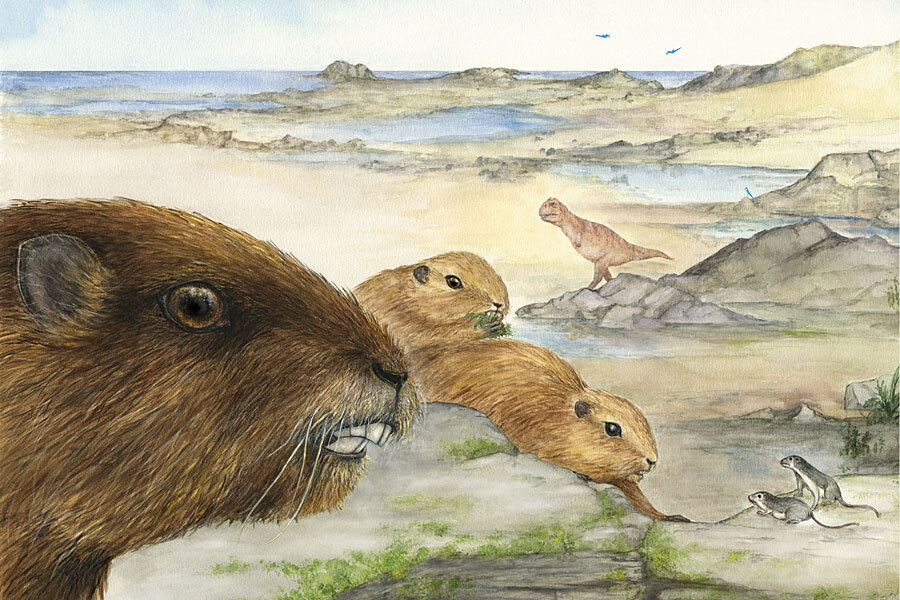Ancient mammal resembled a 20-pound groundhog, say scientists
Loading...
A skull of an enormous ancient mammal could force us to rethink the evolutionary history of mammals, our own taxonomic order.
In a paper published Wednesday in the journal Nature, scientists report that they have discovered remains of a mammal that lived some 66 million years ago on what is today Madagascar. At about 20 pounds, it vastly outweighed nearly all other mammals of its era.
"It was a monster," David Krause of Stony Brook University in New York, who led the research team told the Associated Press. "It looks like a big groundhog."
Krause and colleagues named the creature Vintana sertichi. "Vintana" means "luck" in Malagasy, and was chosen because of the way the skull unexpectedly appeared as the scientists were doing a CT scan of a large sandstone block to look for fish fossils. "We were astounded to see a mammal skull staring back at us on the screen," Dr. Krause told Reuters.
"It was dawning on me that I was experiencing the most incredible bit of luck I had ever been part of," added Joe Groenke, Krause's technician and the first to view the CT images.
The animal's second name honors Joseph Sertich, now a curator at the Denver Museum of Nature & Science, who in 2010 collected the sandstone block.
The 5-inch skull gives scientists their first good window into a poorly understood group of ancient Southern Hemisphere mammals, called gondwanatherians, that had until now been known only from isolated teeth and bits of jaw. They went extinct long ago, without leaving any descendants today.
Vintana is only distantly related to today's mammals and was not a member of any of the three existing groups: placentals, marsupials and monotremes. "It is one of those evolutionary experiments in 'mammalness' that did not make it," Krause told Reuters. "In essence, it really shakes up the early mammalian family tree and helps to reorganize it."
The closest modern comparison to Vintana is a large, semi-aquatic South American rodent called a nutria, Krause told Reuters.
Judging from the animal's exquisitely preserved skull, it was an active plant eater with strong jaws, keen sense of smell, well-developed hearing and terrific eyesight under low light conditions, they wrote.
"It would have been a very fine hors d'oeuvre" for a dinosaur, Krause told the AP.





